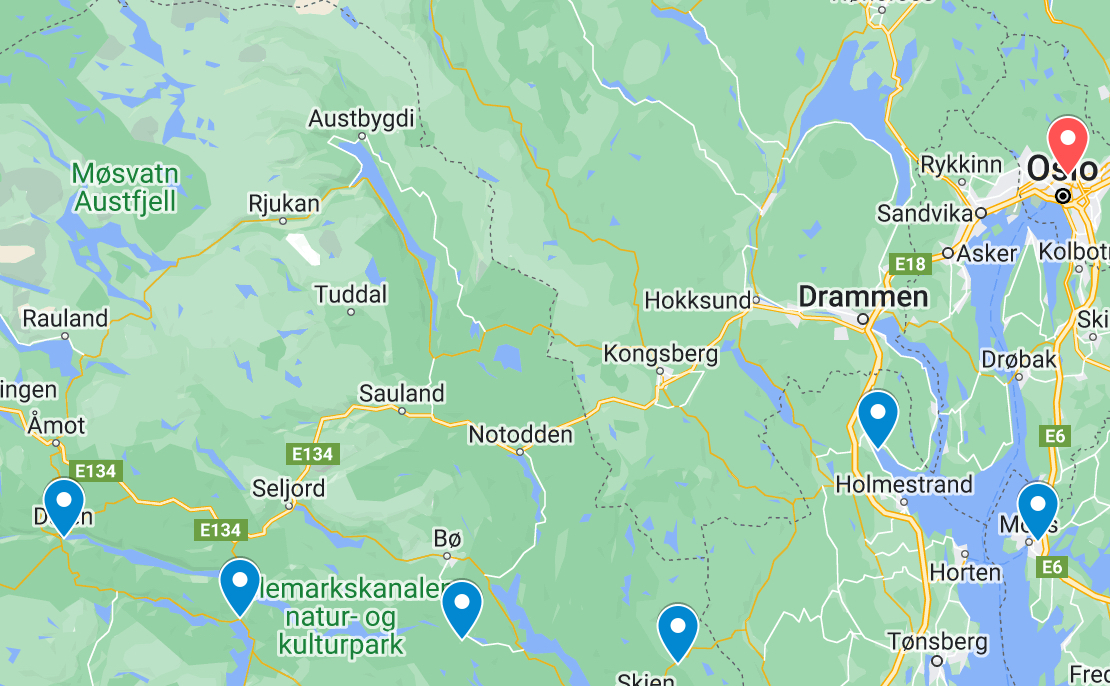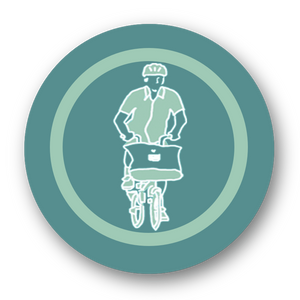
I had the unusual experience of being stopped by a Norwegian on the cycleway. It turned out to be a young woman, so passionate about cycling that she waved me down as we crossed paths.
“There aren’t too many people bike touring around here,” she remarked.
We ended up chatting for a good half hour about the places she’d been. And yes, as you might have guessed, a few years ago she somehow managed to cycle to Nordkapp in winter—and, astonishingly, she enjoyed it!
“You need the right clothing,” she emphasized with the practicality of a true Norwegian.
“In winter, you cycle through a completely different landscape, and it is much quieter everywhere.”
She didn’t manage to convince me. I confessed, somewhat sheepishly, that I’m rather wimpy when it comes to what an Italian would politely call unfavorable weather conditions.
“You Norwegians are just so used to it…” I told her.
They really are. I notice it every day. On a wet, chilly day at a campsite, I took cover in my tent, sulking, while a mother and her young daughter played happily, singing and skipping through the drizzle as if it were the best day of their lives. It was truly admirable—I envied them!
Theresia, the Norwegian cyclist, after failing to lure me into the madness of a diversion to the North Cape, suggested some more feasible routes to get me towards Oslo and eventually out of the country. She also shared with me a new theory about the reserved nature of her fellow Norwegians.
“They are not reserved. Norwegians are shy…” she told me.“I do not know what it is. Maybe the remote and isolated nature of the country…”
She then assured me that, no matter where I was, if I needed water or anything else, ringing a doorbell would only make the locals happy! I must admit, I haven’t put this to the test.
My return to Oslo from the inland mountains was as spectacular as it was grueling. Every kilometre had to be earned, grinding my teeth along roads that were never flat or easy. The effort often rewarded by breathtaking scenery: steep, forested mountains, shimmering lakes, waterfalls, and fast-flowing rivers. Perhaps it’s the three months of cycling, but for the first time, my legs felt achy, demanding I slow down—if that was even possible—and stop more often.
Whenever I cursed the weight of all the luggage I carried, I thought of an Italian—the only person I ever managed to overtake in Norway. I caught up with him as he was zigzagging up a mountain, easily doubling the mileage he covered. He had a fishing rod, heavy trekking boots and fifty kilograms of luggage that made me wonder if half of it was salmon he’d caught along the way. He was struggling much more than I was, and admitted having a bit of a rough time lately. Yet despite the rain, he was determined to cycle over hundred kilometres and reach Kristiansand, catch a ferry, and evacuate the country. He had started from the North Cape and had endured his fair share of bad weather. Like me, he wasn’t traveling on a tight schedule, so I suggested he take shorter days to relax and enjoy more the journey. He didn’t agree.
“I’ve had enough of this Norwegian summer,” he said. “I can’t wait to get to Denmark!”—as if he were heading to the Bahamas.
With good weather now a distant memory, I continued slowly, in a halting rhythm of waiting and cycling.
Now, for something less existential than being battered by wind and rain on constant uphills and downhills: after a month in Norway, I’m curious why almost every house is painted either burgundy, white, dark grey, or ochre yellow. And I’m not talking about a generic burgundy red, but a precise shade replicated with astonishing accuracy, as if every house had the same decorator that painted them all at the same time! I imagine Norway must have a Ministry of Colours with inspectors traveling the country with a Pantone reference chart. Perhaps if the colours are even slightly off, they impose fines or raise taxes. Nothing else could explain such uniformity in tone.
It is rare to hear laughter or see smiling faces, yet Norway, along with the other Scandinavian countries, always tops the world charts measuring the happiness of its population. Maybe it’s because of 'Hygge,' a Danish and Norwegian concept. Hundreds of books have been written about it, yet nobody has ever truly seen it or knows what it really is. It encompasses a feeling of coziness, warmth, and contentment, whose ephemeral nature is hard to pin down. I think it takes more than Hygge to compensate for the dreary climate, long winters with hardly any daylight, and high taxes. Practical reasons for contentment might include excellent parental support, free healthcare, quality education, and a social safety net that steps in when needed. Only with these foundations in place can one truly experience Hygge, embracing the present and finding joy in life’s small pleasures—whether it’s savoring a cup of coffee or reading a book wrapped in the soft embrace of a cashmere blanket.
Norway is bidding me farewell with two of the sunniest days I’ve seen all month, for which I’m truly grateful. The weather even permitted me a final swim in the fjord at Sande. I reached Oslo, where the familiar sights stirred memories of a previous visit. This leg of the journey could not have ended more perfectly than with lunch and a long, lingering chat with an old Norwegian friend and his family, a conversation that stretched well into the afternoon.
“So, what do you think about Norwegians” was the first question they asked me.“Wonderful people. Just a little shy…” was the well informed answer.
Despite its challenges, it was undeniably a place worth revisiting, best savored at a slow pace from the saddle of a bicycle. The stunning vistas sustained me through the tough moments when, cold and drenched, I questioned the wisdom of touring these Nordic countries. I will miss these landscapes, though perhaps less so the relentless rollercoaster of their steep mountains.
